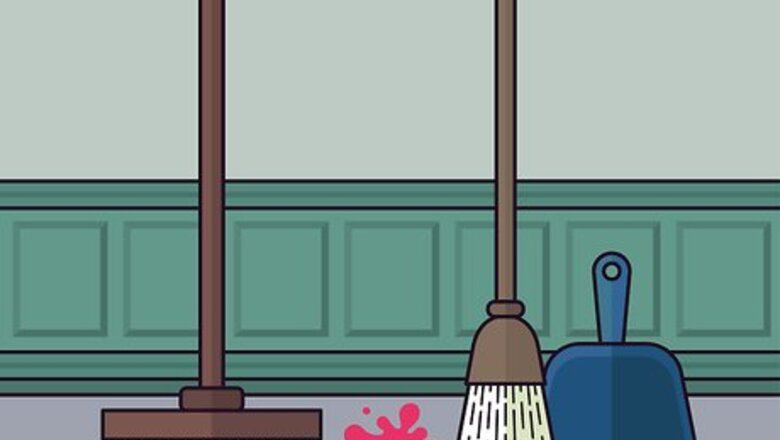
views
For Small Spots
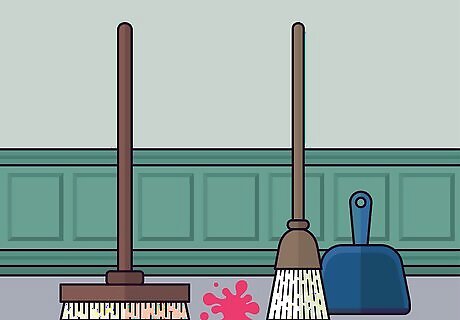
Prepare the concrete surface. Use a broom or shop vacuum to remove all dirt or debris. If possible, remove any loose paint from concrete with a scraper or brush.
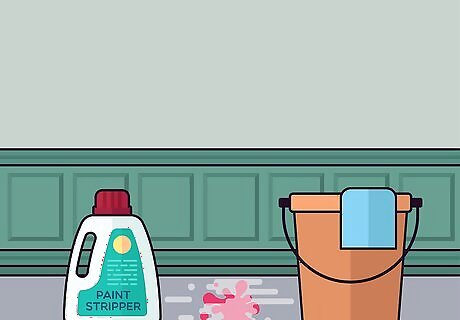
Apply a chemical paint stripper to the concrete surface. The type of stripper you should use depends on the type of paint you are trying to remove, such as water-based or oil-based paint. If in doubt, use a stripper designed for removing oil-based paints.
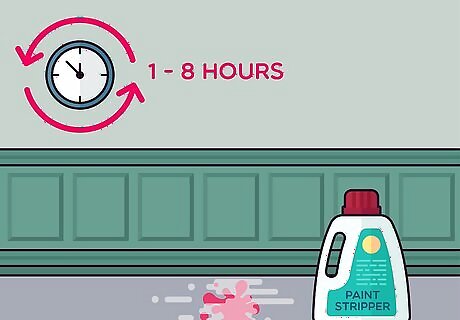
Allow the stripper to work. Check the directions printed on the can by the manufacturer. This could be anywhere from 1 to 8 hours. In some cases, only minutes may be required.

Scrub the concrete. Use a wire scrub brush or a scraper to remove the loosened paint. You could also use a pressure washer for outdoor concrete surfaces such as driveways or patios.
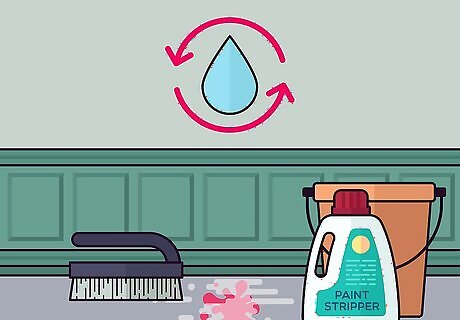
Repeat the steps if necessary. In some cases, a second or third application of paint stripper is needed to thoroughly remove paint from concrete.
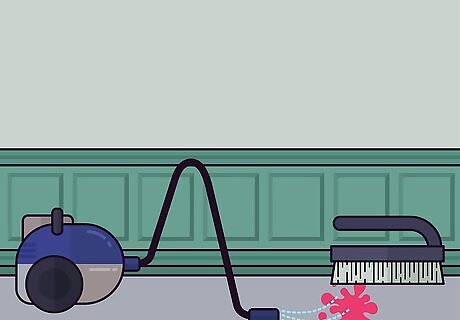
Clean the concrete surface. Use a power or pressure washer to remove all traces of the paint stripper. If you have removed paint drops or drips, cleaning the concrete can avoid leaving clean spots on the surface.
For Tougher Spots
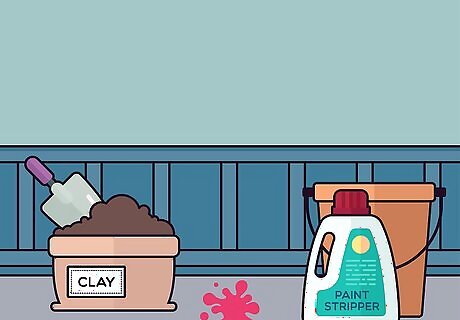
Make an absorbent paint stripper. Assemble your materials. You will need paint stripper. If you are working in a well-ventilated area (outside or in an open, separate garage), you can use a stripper with methylene chloride. This will make the process much faster. You will need a respirator if working with this kind of paint stripper. You will also need absorbent material. Finely ground clay is most effective. If you don’t have access, you can crush up cat litter into a powder. To finish the cleanup job, you will need a stiff brush and scouring powder.
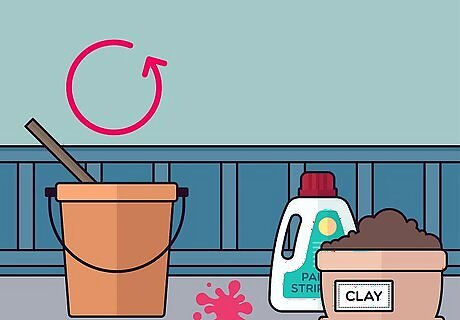
Mix the stripper with the absorbent material. Create a paste with your clay or cat litter. Depending on how thick the stripper is, you may not need to add much material. The absorbent material will help draw the paint off of the concrete, making it easier to scrape off.

Spread the mixture. Apply a layer of the absorbent paint stripper mixture to the paint spot on the concrete. Allow time for the stripper to work. Depending on the chemicals that you are using, this could take anywhere from 20 minutes to several hours. Add more paint thinner to the applied mixture during the process to keep the ingredients active.
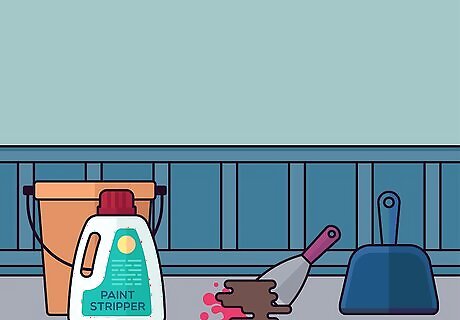
Scrape the mixture off. The paint thinner should have done most of the work for you, allowing you to remove most of the paint by simply scraping the mixture off with a hard plastic scraper. Add a second layer of mixture if there is remaining paint, and repeat the process.
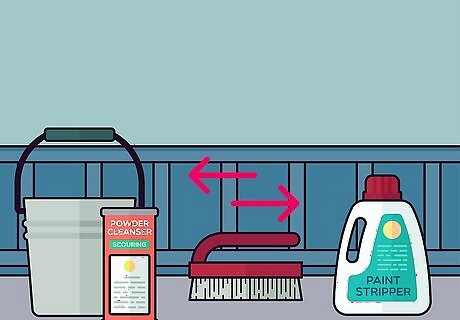
Scrub the spot. Use the stiff brush, scouring powder, and water to scrub at the stripped surface, removing any excess paint particles. Rinse away the scouring mixture and keep scrubbing with the brush to finish the job.
For Large Areas
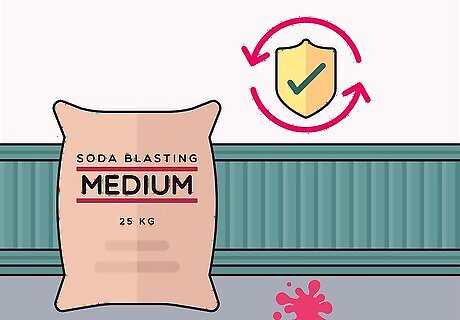
Consider soda blasting. Determine if a blaster is right for your needs. If your paint covers a large area, then a blaster may be a better choice over a paint stripper solution. One form of blasting is soda blasting, which uses baking soda as the scouring agents. Soda blasting is also much more environmentally-friendly than using chemicals, and will not damage the concrete underneath.
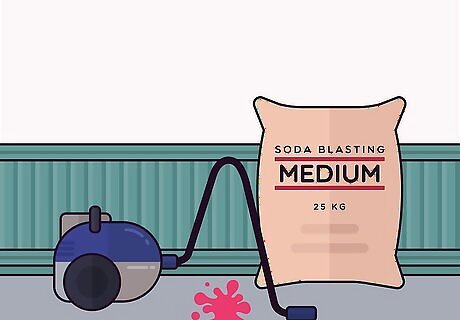
Obtain a blasting unit. To soda blast, you will need a pot blaster. Your local hardware store may be able to rent them to you. You will also need special sodium bicarbonate. The baking powder that you buy at the grocery store is too fine to use in a soda blaster. The proper powder should be available where you rent the blaster, but can also be ordered online. Most standard sand blasters cannot work with soda. You will need to obtain a specialized soda blaster in order to use sodium bicarbonate.
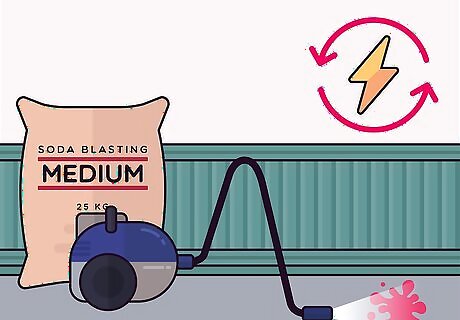
Blast the painted area. Work slowly, holding the nozzle about a foot and a half away from the ground. Be sure to wear a respirator to avoid inhaling particles. Move the nozzle evenly across the painted area to make sure that no paint gets left behind. If blasting near vegetation, be sure to avoid getting excess particles on plants. The high pH soda can cause browning and death in flowers and bushes. If you have a lot of paint to remove, consider hiring a professional blaster. The amount of blasting material needed and the size of the blasting unit will most likely be far too much to afford on your own.


















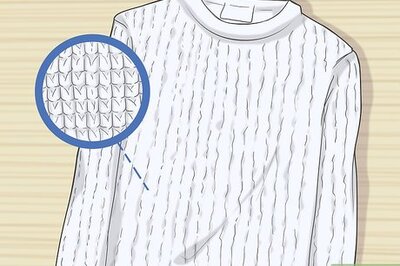
Comments
0 comment